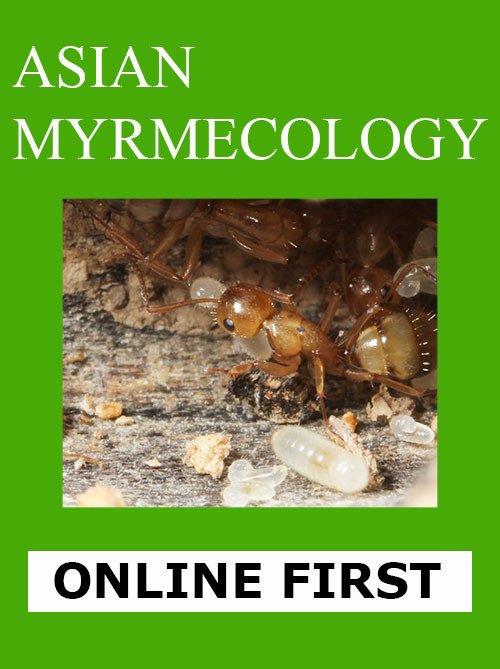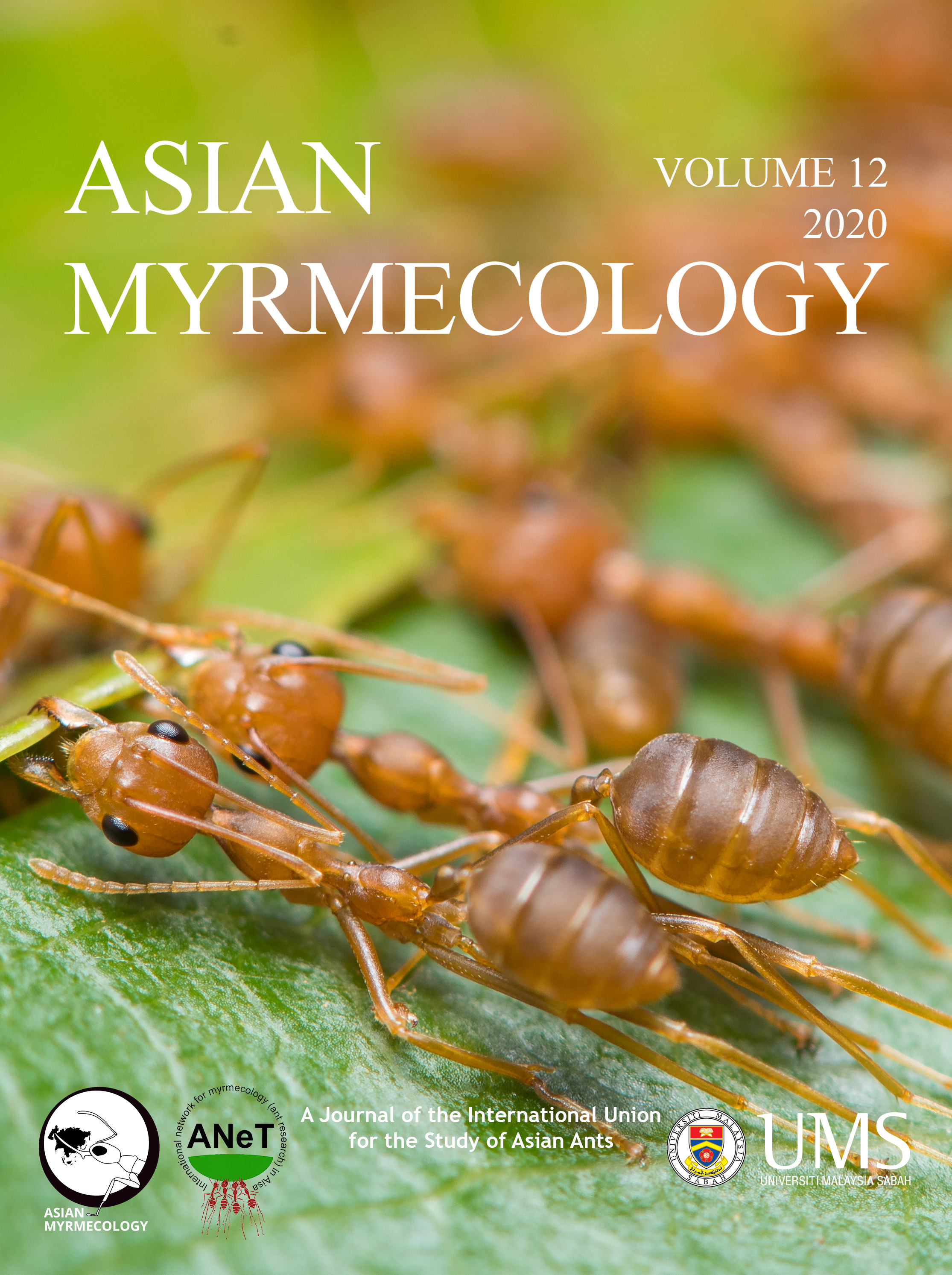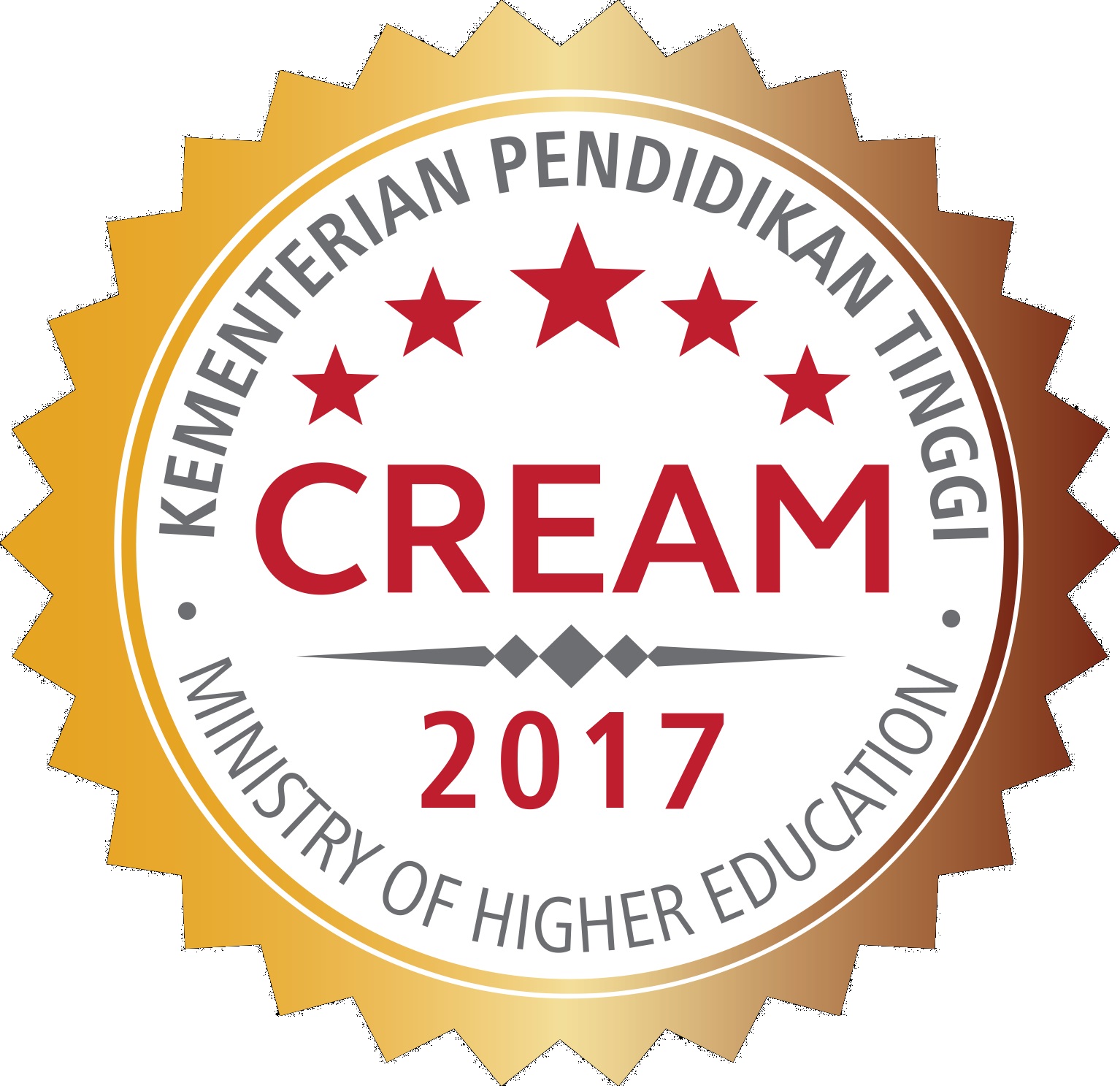ASIAN
MYRMECOLOGY
Image: François Brassard
online first (online version of paper published before print issue)
DOI: 10.20362/am.014003
Asian Myrmecology 14: e014001 (1-10)
article first published online: 30/May/2021
Difference in leaf herbivory between two plant-ant taxa associating with a myrmecophytic species, Macaranga lamellata
USUN SHIMIZU-KAYA1, 2, *, TAKAO ITIOKA1 and PAULUS MELENG3
Abstract:
Macaranga lamellata (Euphorbiaceae) is a myrmecophytic species that is protected against herbivorous insects by two plant-ant taxa, Colobopsis macarangae (Formicinae) and Crematogaster spp. (Myrmicinae). Although a single M. lamellata tree houses one plant-ant colony of either of the two taxa, both coexist in a population of M. lamellata in a Bornean rainforest. To elucidate the extent of herbivory damage upon M. lamellata trees associated with Colobopsis relative to trees associated with Crematogaster, we counted the number of leaf galls and measured the leaf loss area chewed by leaf-chewing insects on M. lamellata in the forest. The occurrence of gall midges was not significantly different between the trees associated with the two plant-ants, while the degree of leaf-chewing herbivory was significantly higher on Crematogaster-associated trees than Colobopsis-associated trees. The data gathered on chewing traces observed on Crematogaster-associated trees indicated that most herbivory damage was caused by a phasmid species. These results suggest that the herbivory pressures and occurrences of different herbivore species differ between Crematogaster-associated and Colobopsis-associated trees within a population of M. lamellata.
Keywords:
ant defense, ant-plant interactions, Bornean tropical rainforests, Colobopsis macarangae, Crematogaster, Camponotus, Cecidomiidae, mutualistic relationships, Orthomeria alexis
Get PDF (359KB):
Get Electronic Supplementary Material (1743KB):
1Graduate School of Human and Environmental Studies, Kyoto University, Yoshida Nihonmatsu-cho, Sakyo-ku, Kyoto 606-8316, Japan
2Current address: Faculty of Life and Environmental Science, Shimane University, Matsue 690- 8504, Japan
3Research Development and Innovation Division, Forest Department Sarawak, KM 10 Jalan Datuk Amar Kalong Ningkan, 93250 Kuching, Sarawak, Malaysia
*Corresponding author: ushimizu-kaya@life.shimane-u.ac.jp



